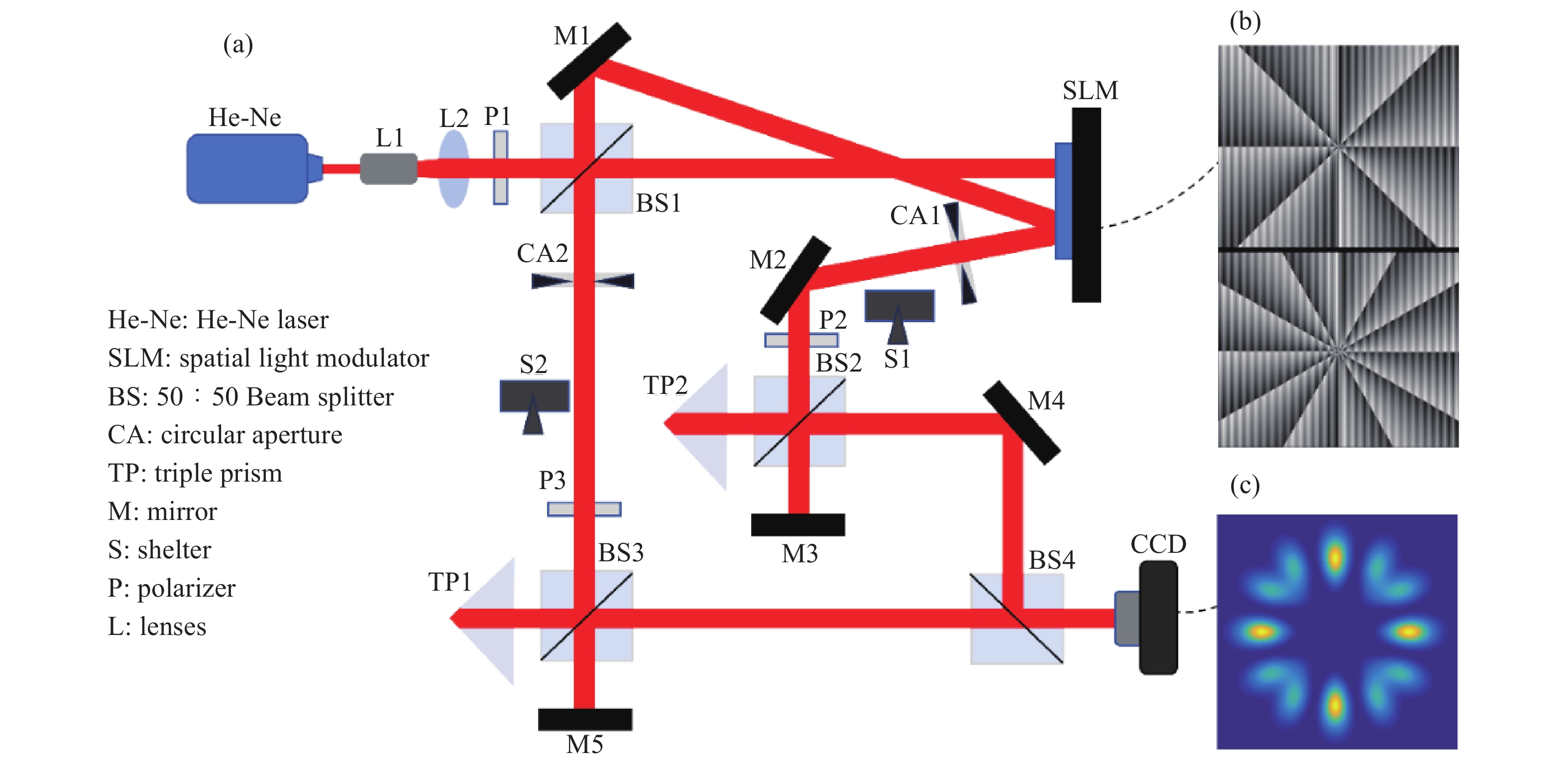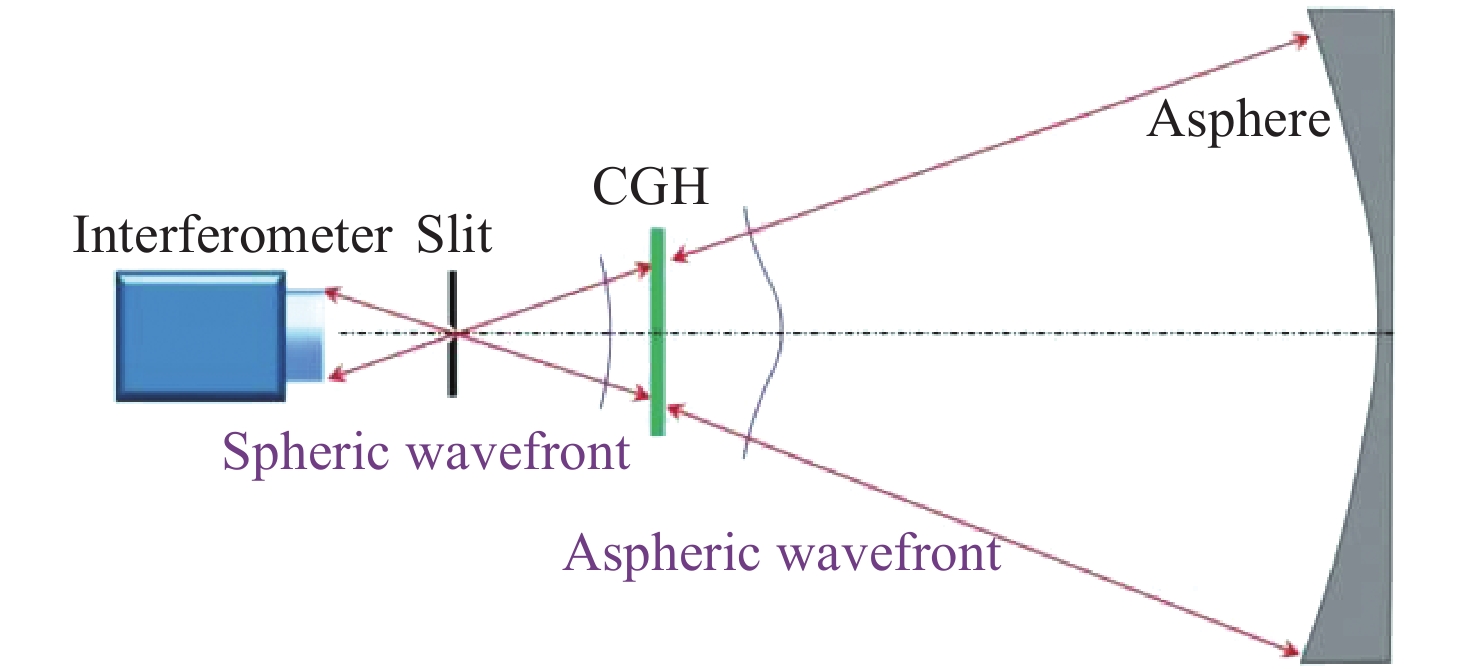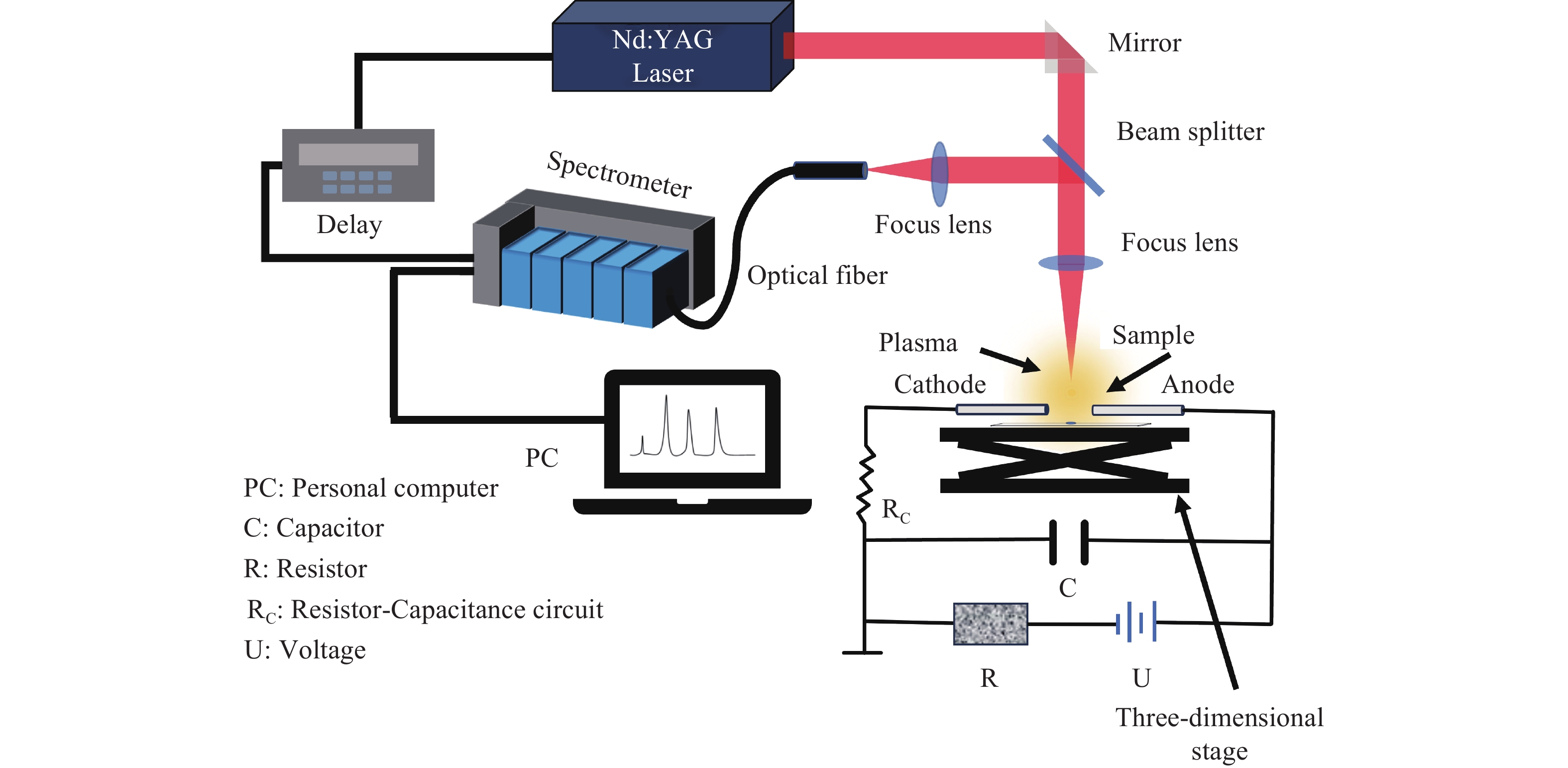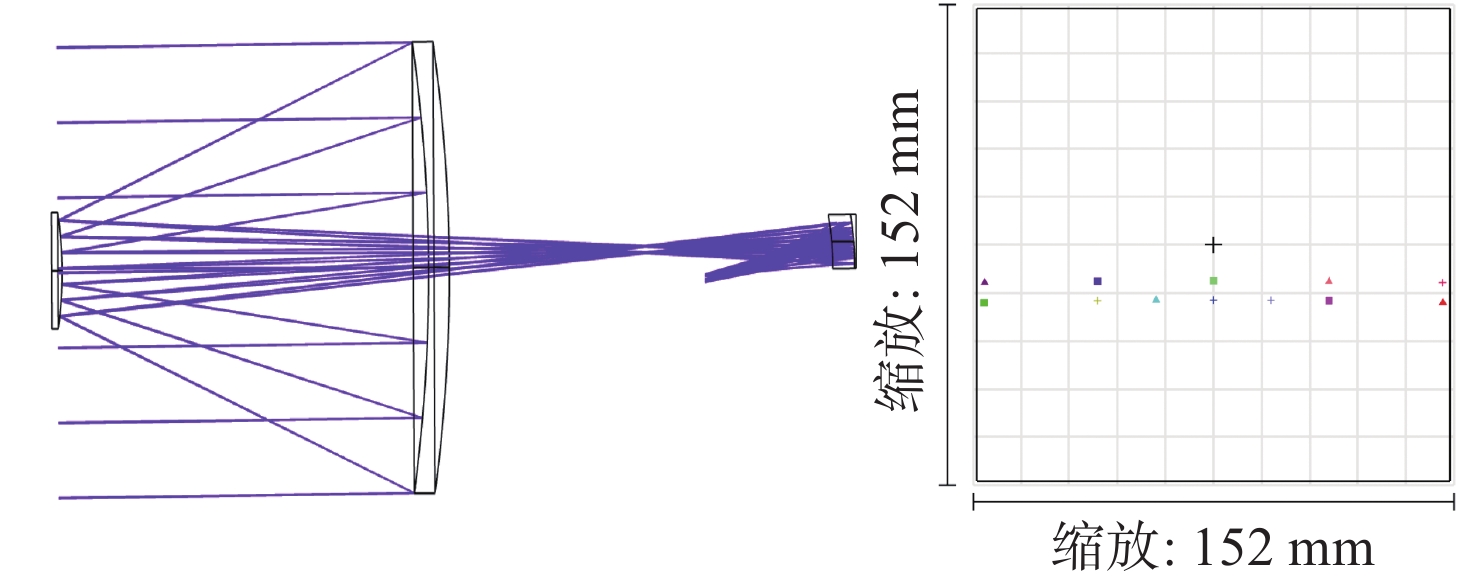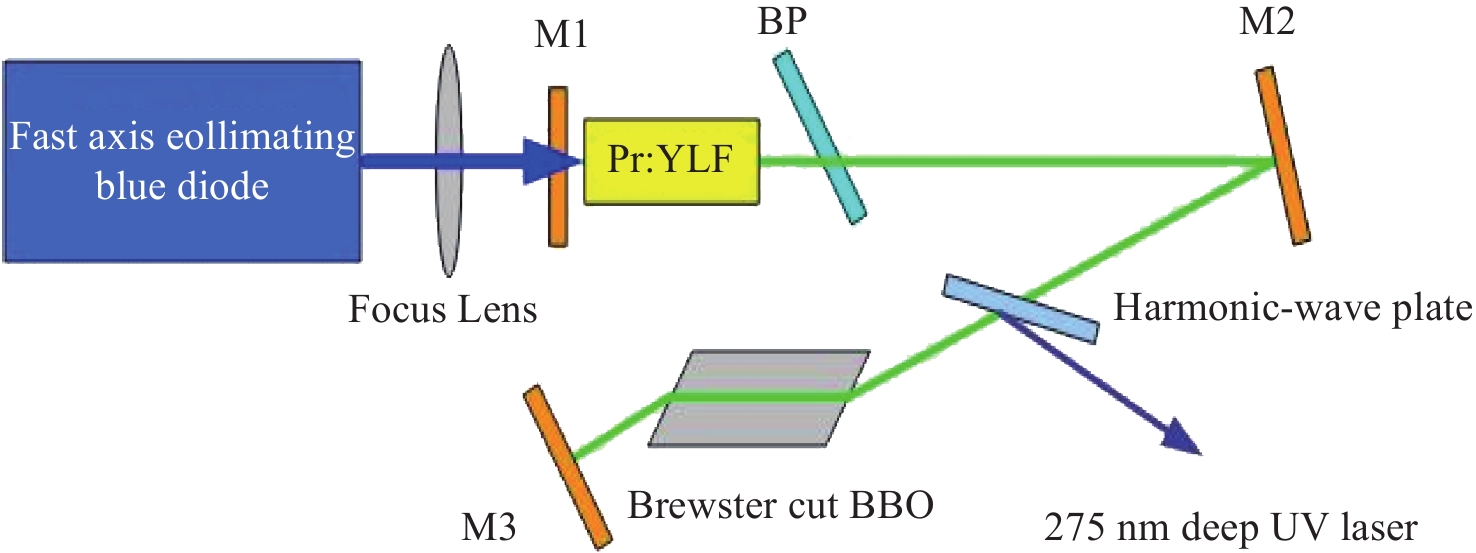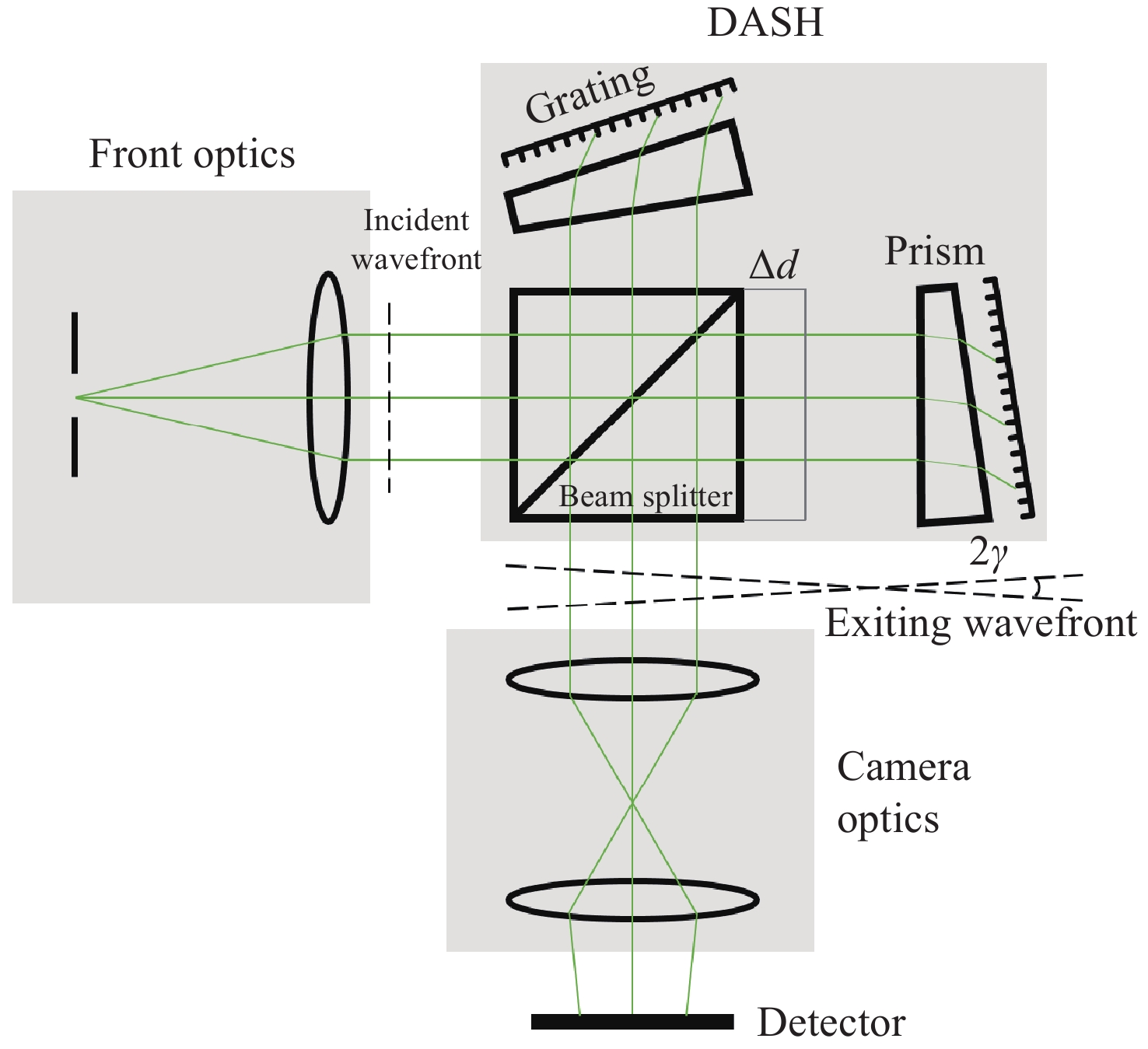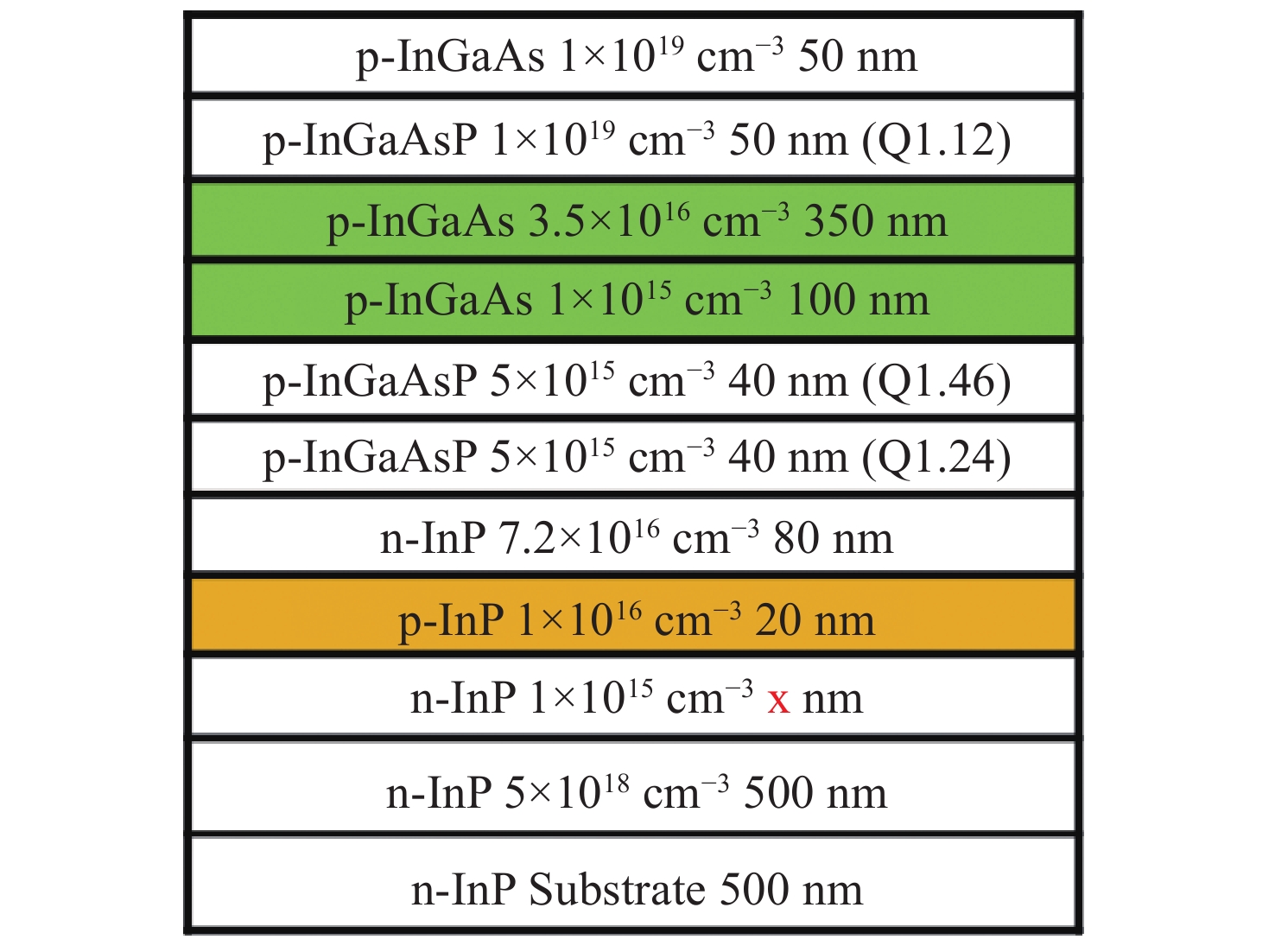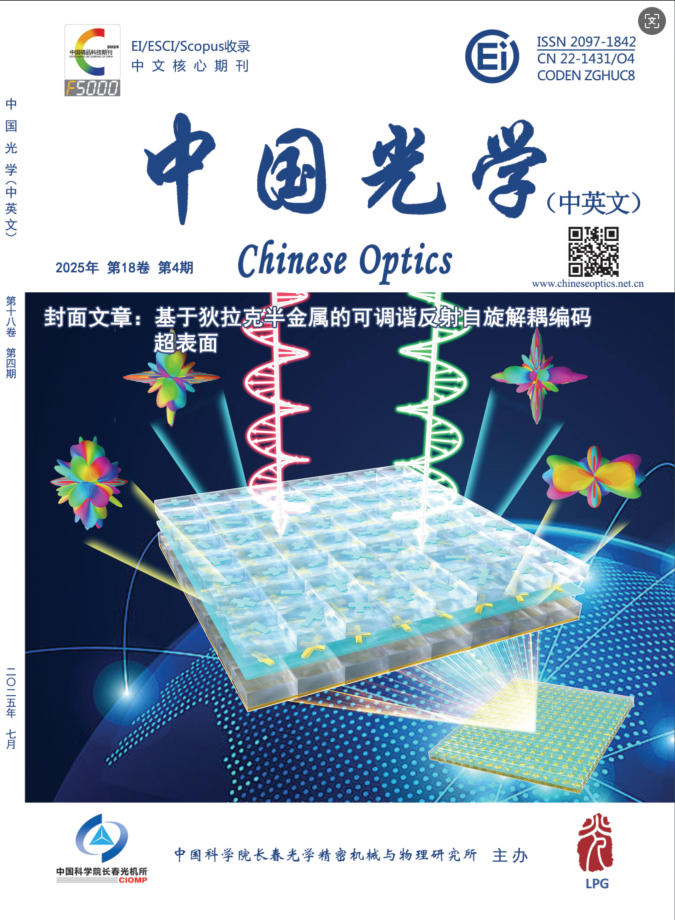2025 Vol. 18, No. 2
To identify the vortex beams orbital angular momentum (OAM) with imbalanced labels, this paper proposes a derived model based on global cost SMOTE and deep extreme learning machine (DELM). Unlike typical machine learning methods, the proposed model can obtain the analytical expression of the mapping model. It avoids repeated parameter optimization, thus building a suitable model for time-varying engineering applications. In the data generation stage, the inverse matrix of covariance was used to remove the influence of dimensions, and the differences among samples within the same category were effectively measured. In the model selection stage, considering the transmission characteristics of light signals in atmospheric turbulence, the DELM was adopted to quantify the mapping relationship between light spots and labels. Then the FISTA algorithm was used to calculate the model’s analytical expression. Experiments were carried out on different intensity atmospheric turbulence data sets. The representative comparative methods include WELM and k-nearest neighbor. Experimental results show that the proposed method’s root mean square error (RMSE) achieves
We present a topological charge difference detection technique for the orbital angular momentum of vortex beams. In this technique, by utilizing two vortex beams with distinct topological charges, a periodic difference pattern is generated. The orbital angular momentum of the vortex beam to be measured can be quickly and accurately calculated by reading the number of spots in one period. Compared with traditional interference and diffraction methods which require the reception of the complete vortex beam, the topological charge difference method only requires the reception of a small amount of vortex beam to measure. This has significant advantages in the measurement of high-order and large-scale vortex beams, and has potential applications in long-distance free-space optical communication of vortex beams.
Scanning Beam Interference Lithography (SBIL) is an effective way to fabricate monomeric large-area high-precision gratings. Using dual-frequency laser interferometer feedback table position to splice interference fringes accurately, the measurement error will inevitably introduce grating engraving error and reduce the diffraction wavefront quality of grating. The intrinsic error caused by the laser interferometer’s structure was analyzed, and the evaluation method of the intrinsic error index of the laser interferometer in complex environments was proposed. The theoretical models of dead path error and measuring optical path variation error combined with actual working conditions and empirical formulas were established. The coupling relationship between rotation and displacement of any table point was deduced by constructing translation and rotation operators, and the measurement errors under different table attitude roll angles were simulated. The displacement error experiment and grating scanning exposure experiment were carried out. The experimental results show that the displacement error is consistent with the theoretical calculation results. The diffraction wavefront of the 200 mm×200 mm grating is 0.278λ@632.8 nm. The analytical method in this paper connects the transmission link between the grating diffraction wavefront and the measurement error, laying a theoretical and experimental foundation for the fabrication of meter-size nano-precision holographic gratings.
In order to solve problems involved in high-precision surface map testing of coaxial high-order aspherical surfaces, this paper proposes a null compensation testing method based on CGH. Based on this method, the separation of the diffraction order in the coaxial aspherical compensation design can be effectively realized, and the null compensation design of the mirror to be measured can also be realized. Combined with engineering examples, this paper realizes a null compensation testing design for a coaxial high-order aspherical mirror with a 260 mm aperture. The CGH design results show that the theoretical design testing residual (RMS value) can reach 0 nm based on the designed method. The practical testing of the coaxial high-order aspherical mirror is also completed. To further analyze the testing results, error analysis is carried out on the error source in the testing process, to verify the reliability and accuracy of the method.
In phase-shifting profilometry, the non-standard phase-shifting profilometry combined with the temporal phase unwrapping algorithm requires fewer fringe patterns, thereby achieving higher measurement efficiency. Since fringe frequency significantly affects measurement accuracy, we analyze phase errors in the temporal phase unwrapping of the non-standard phase-shifting profilometry and further evaluates its reliability. It was found that the reliability of phase unwrapping is closely related to the allocation of fringe frequencies. Consequently, we propose an optimal fringe frequency allocation strategy. Based on this strategy, we conduct comparative experiments on different frequency combinations of non-standard phase-shifting profilometry. Then the experimental results show that compared with the non-optimal frequency combinations of the 3
The CMOS image sensor is widely used in aerospace, medical imaging, industrial detection, military reconnaissance, and other fields. The laser interference and damage to CMOS image sensors have also become a research hotspot in related fields at home and abroad. To investigate the impact of pulsed laser on back-illuminated CMOS image sensors, we select the Sony IMX178 back-illuminated CMOS image sensor as the target. Based on the heat conduction equation, the finite element simulation software COMSOL Multiphysics is used to compare and calculate the temperature distribution of the CMOS image sensor under the irradiation of single-pulse lasers with different parameters. The calculation results indicate that the point damage thresholds of the sensor under the effects of single-pulse lasers at 532 nm (1 ns), 1064 nm (1 ns), 532 nm (30 ps), and 1064 nm (30 ps) are respectively 61.12 mJ/cm2, 75.76 mJ/cm2, 31.83 mJ/cm2, and 37.43 mJ/cm2. Subsequently, an experimental study is conducted on the laser irradiation effects of back-illuminated CMOS image sensors. The experimental results demonstrate that the image sensor exhibits a lower damage threshold under the influence of 532 nm pulsed lasers compared to 1064 nm pulsed lasers; picosecond pulsed lasers, with higher peak power compared to nanosecond pulsed lasers, are more prone to causing point damage. The calculated point damage thresholds are highly consistent with the experimental results.
As an advanced Raman amplification technology, third-order Raman fiber amplifiers are used in long-haul unrepeated optical transmission due to their higher gain and lower noise figure. But there is currently very limited research on it in China, and the relationship between the pump configuration and the amplifier’s performance remains unclear. Therefore, this paper analyzes the influence of second-order pump seed light on third-order Raman fiber amplifiers through experiments. First, the feasibility of not using second-order pump seed light was qualitatively analyzed. Then, it was experimentally verified that in the absence of second-order pump seed light, the third-order Raman fiber amplifier can still achieve signal light gain but at decreased efficiency. A 47-channel 200 km wavelength division multiplexing transmission system was constructed. The experimental results show that the third-order Raman fiber amplifier can amplify the signal light without the second-order pump seed light. However, introducing the second-order pump seed light can significantly improve its performance. A second-order pump seed light with only 25 mW can achieve a minimum signal power gain of 3.7 dB, an average gain of 6 dB, and an average signal-to-noise ratio gain of 0.8 dB. Eliminating second-order pump seed light can reduce costs, but introducing a second-order pump seed light brings significant performance improvements to third-order Raman amplifiers.
In traditional multi-line laser 3D reconstruction technology, due to the inevitable noise affecting the multi-line laser lines, the extracted laser center coordinates often contain specific errors. These errors can lead to the inability to obtain high-precision 3D data when using matching points found based on epipolar constraints for 3D reconstruction directly. To address this issue, we propose a method based on geometric estimation to achieve 3D reconstruction of multi-line lasers. First, by calibrating the quadratic surface equations of the multi-line laser, combined with the binocular epipolar constraint method, the initial matching points of the multi-line laser can be calculated. After finding the correct initial matching points, a geometric distance minimization estimation model can be established using the distance constraint from points to epipolar lines. This geometric distance refers to the distance from the laser center points in the left and right images to their corresponding epipolar lines. New matching points that better conform to the epipolar constraints can be recalculated through this geometric distance minimization optimization estimation. Finally, these new matching points can be used to complete the 3D reconstruction of the multi-line laser. Compared to the traditional method based on epipolar constraints, the algorithm proposed in this paper performs better in matching and accuracy. The accuracy of the final 3D reconstruction can reach about 0.02 mm. This method can significantly improve the overall accuracy of binocular multi-line laser reconstruction, thereby obtaining more accurate and reliable 3D data.
The sensitivity of the phase-sensitive optical time-domain reflecting (Φ-OTDR) system is limited by the system’s intrinsic noise, such as the laser’s phase noise, the erbium-doped fiber amplifier’s spontaneous emission noise, and the photodetector’s shot and thermal noise, as well as random environment of noise. Therefore, we investigate the noise reduction algorithm based on the optical time-domain reflecting data to improve the system’s signal-to-noise ratio (SNR) without degrading its frequency response range. Furthermore, we propose a Savitzky-Golay smoothing algorithm by selecting a slidable fixed-length window to process OTDR data for the SNR improvement while maintaining the system sampling frequency. Then, we built the experimental system to demonstrate the results. The experimental results show that by using the Savitzky-Golay smoothing algorithm, the SNR of the system is improved by 5.41 dB relative to the difference method with the original data, and the SNR is improved by 3.39 dB and 5.05 dB, compared to the commonly used cumulative averaging method and sliding averaging method, respectively. It is demonstrated that the Savitzky-Golay smoothing algorithm can improve the sensitivity and accuracy of the Φ-OTDR system, which helps to sense weak vibration events accurately and reduce false alarm rates.
In order to explore the effect of titanium dioxide (TiO2)/poly(sodium 4-styrenesulfonate) (PSS) nanofilms on the Kretschmann-type surface plasmon resonance sensor, the spectral changes of the sensor after depositing TiO2/PSS nanofilms of different thicknesses were systematically studied. The reasons for the spectral changes were further explained and discussed theoretically. First, TiO2/PSS multilayer films were deposited in situ on the surface of the glass chip sputtered with a gold layer via electrostatic layer-by-layer self-assembly technology, and the corresponding reflection spectra of the sensor were recorded in real time. Then, the original reflectance spectrum data was processed to make the spectral curve clearer and more visible. Finally, the experimental results were simulated and analyzed using MATLAB software programming. The results show that with the number of TiO2/PSS bilayers increasing, four different types of reflection peaks successively appeared in the sensor’s spectra in the 450−900 nm wavelength range. The four types of reflection peaks correspond to the surface plasmon resonance mode, the first-order mode, the second-order mode, and the third-order mode of the transverse magnetic mode of the sensor, respectively. This indicates that the Kretschmann-type sensor’s sensing mode and reflection spectrum type can be modulated by controlling the thickness of TiO2/PSS thin films.
Rapid determination of rare earth elements (REEs) in liquid-phase samples is of great significance in the fields of ion-adsorption rare earth resource exploration and exploitation, quality control of extraction processes, recycling of rare earth resources, and nuclear industry wastewater monitoring. In order to reduce the detection limit of REEs in liquid samples by laser-induced breakdown spectroscopy (LIBS), superhydrophobic array-assisted spark-enhanced laser-induced breakdown spectroscopy (SHA-SD-LIBS) was used in this study to determine the REEs in liquid-phase samples. Optimal experimental conditions were chosen to measure the REEs with the parameters of La II 394.91 nm, Er 402.051 nm, Ce II 418.66 nm, Nd II 424.738 nm, Gd II 443.063 nm, and Pr 492.46 nm as the characteristic spectral lines, and the calibration curves were established for the quantitative analysis of the solutions of six rare earth elements (La, Er, Ce, Nd, Gd and Pr) with different concentrations. The results show that the fit coefficients
Aiming at the problems in existing infrared and visible image fusion methods, such as the difficulty in fully extracting and preserving the source image details, contrast, and blurred texture details, this paper proposes an infrared and visible image fusion method guided by cross-domain interactive attention and contrastive learning. First, a dual-branch skip connection detail enhancement network was designed to separately extract and enhance detail information from infrared and visible images, using skip connections to prevent information loss and generate enhanced detail images. Next, a fusion network combining a dual-branch encoder and cross-domain interactive attention module was constructed to ensure sufficient feature interaction during fusion, and the decoder was used to reconstruct the final fused image. Then, a contrastive learning network was introduced, performing shallow and deep attribute and content contrastive learning from the contrastive learning block, optimizing feature representation, and further improving the performance of the fusion network. Finally, to constrain network training and retain the inherent features of the source images, a contrast-based loss function was designed to assist in preserving source image information during fusion. The proposed method is qualitatively and quantitatively compared with current state-of-the-art fusion methods. Experimental results show that the eight objective evaluation metrics of the proposed method significantly outperform the comparison methods on the TNO, MSRS, and RoadSence datasets. The fused images produced by the proposed method have rich detail textures, enhanced sharpness, and contrast, effectively improving target recognition and environmental perception in real-world applications such as road traffic and security surveillance.
In order to construct a coal pyrolysis HCN gas concentration detection system based on thermogravimetry-tunable diode laser absorption spectroscopy (TG-TDLAS) technology, and improve the stability and sensitivity of the system by combining wavelength modulation technology. In this paper, we take advantage of the characteristics of HCN with high absorption intensity at wavelength
This paper provides a theoretical model for studying typical airport ground materials’ polarization characteristics which is required for the development of polarization imaging instruments. First, serious shadow masking effects were analyzed based on the P-G model. These effects occur when light is incident at a large angle. Then, the shadow masking function was optimized using the spherical trigonometry formula. This optimization equates the specular reflection point to a three-dimensional sphere. Due to the unique dispersion characteristics of different targets, a new bidirectional polarization distribution function (BPDF) model was introduced to replace the traditional BRDF parameter affected by wavelength and body scattering. The new BPDF model integrates diffuse reflection and body scattering. In the experimental stage, the accuracy of the line polarization degree was calibrated. The line polarization degree of typical airport ground material was fitted with model parameters. This fitting was based on the dynamic TS algorithm through multi-angle BRDF experiments. The fitting model's six parameters were used to obtain the root mean square roughness parameter. This process verified the validity of the modified BPDF model. In the simulation stage, the root mean square error (RMSE) was used as the accuracy index. The modified BPDF model, control model, and experimental results were compared to analyze the effects of detection, azimuth, and incidence angles on polarization characteristics. The accuracies of the four experimental targets improved by 4.39%, 4.00%, 4.17%, and 5.26% compared with the control model. The RMSE was less than 0.05 for large detection angles. This allows the modified model to study polarization characteristics of rough materials like airport ground targets. Finally, the effect of fitting parameters on polarization characteristics was simulated. Results show that line polarization is positively related to the refractive index and inversely related to the surface roughness. The accuracy of the modified BPDF model is thus proved. This provides ideas for studying polarization characteristics of airport ground targets.
In order to simulate dynamic scenes with high accuracy and high reliability, a short-wave infrared (SWIR) and mid-wave infrared (MWIR) multiband catadioptric common-aperture optical system is designed. The system combines the advantages of reflection, refraction, and common-aperture optical paths. The system includes a main optical system, a short-wave optical system and a mid-wave optical system, all designed independently. The initial structure of the optical system is obtained according to theoretical calculation, and the optical parameters are further detailed by optical design software. Finally, the sub-systems are combined according to the principle of pupil matching. The system’s image quality is further optimized, and the system design's rationality is verified by the simulation of the modulation transfer function (MTF) and distortion. The designed short-wave optical system has a field angle of ±0.107°, a focal length of 2500 mm, an entry pupil size of 300 mm, an MTF that reaches the diffraction limit, and less than 0.3% distortion. The mid-wave optical system has a field angle of ±0.65°, a focal length of 750 mm, an entry pupil size of 300 mm, an MTF closes to the diffraction limit, and less than 1% distortion. The system has good image quality, small size and strong practicability. It has great application potential in the field of photoelectric tracking and space detection.
Due to spacecraft’s volume and weight constraints, it is challenging to simultaneously obtain large aperture, high resolution, and hyperspectral information in spaceborne remote sensing systems. We propose a novel hyperspectral imaging system that utilizes a shared primary and secondary mirror design and a coaxial five-mirror optical path for multi-channel separation. By integrating Offner convex grating spectroscopy, the system enables hyperspectral detection from the visible to the long-wave infrared spectrum. Design results indicate that with a primary mirror diameter of
This paper describes what is thought to be the first generation of a continuous wave deep ultraviolet laser at 275 nm by efficient frequency doubling of a blue-diode-pumped Pr:YLF laser at 550 nm. By employing a novel fast-axis collimated blue semiconductor laser as the pump source, combined with a folded cavity and innovation coating technology, and utilizing a Brewster-cut BBO crystal for intracavity frequency doubling, TEM00 mode deep UV laser radiation at 275 nm with an output power of 351 mW is obtained. This marks the first report of achieving 275 nm laser generation based on Pr:LiYF4 to date.
As an advanced device for observing atmospheric winds, the spaceborne Doppler Asymmetric Spatial Heterodyne (DASH) interferometer also encounters challenges associated with phase distortion, particularly in limb sounding scenarios. This paper discusses interferogram modeling and phase distortion correction techniques for spaceborne DASH interferometers. The modeling of phase distortion interferograms with and without Doppler shift for limb observation was conducted, and the effectiveness of the analytical expression was verified through numerical simulation. The simulation results indicate that errors propagate layer by layer while using the onion-peeling inversion algorithm to handle phase-distorted interferograms. In contrast, the phase distortion correction algorithm can achieve effective correction. This phase correction method can be successfully applied to correct phase distortions in the interferograms of the spaceborne DASH interferometer, providing a feasible solution to enhance its measurement accuracy.
This paper proposes a novel modified uni-traveling-carrier photodiode (MUTC-PD) featuring an electric field regulation layer: a p-type doped thin layer inserted behind the PD’s n-doped cliff layer. This electric field regulation layer enhances the PD’s performance by not only reducing and smoothing the electric field intensity in the collector layer, allowing photo-generated electrons to transit at peak drift velocity, but also improving the electric field intensity in the depleted absorber layer and optimizing the photo-generated carriers’ saturated transit performance. Additionally, the transport characteristics of the peak drift velocity of photogenerated electrons in the device’s collection layer can be used to optimize its parasitic characteristics. The electron’s peak drift velocity compensates for the lost transit time. Thus improving the 3 dB bandwidth of the PD’s photo response. Finally obtains a MUTC-PD with a 3 dB bandwidth of 68 GHz at a responsivity of 0.502 A/W, making it suitable for 100 Gbit/s optical receivers.
To realize effective co-phasing adjustment in large-aperture sparse-aperture telescopes, a multichannel stripe tracking approach is employed, allowing simultaneous interferometric measurements of multiple optical paths and circumventing the need for pairwise measurements along the mirror boundaries in traditional interferometric methods. This approach enhances detection efficiency and reduces system complexity. Here, the principles of the multibeam interference process and construction of a co-phasing detection module based on direct optical fiber connections were analyzed using wavefront optics theory. Error analysis was conducted on the system surface obtained through multipath interference. Potential applications of the interferometric method were explored. Finally, the principle was verified by experiment, an interferometric fringe contrast better than 0.4 is achieved through flat field calibration and incoherent digital synthesis. The dynamic range of the measurement exceeds 10 times of the center wavelength of the working band (


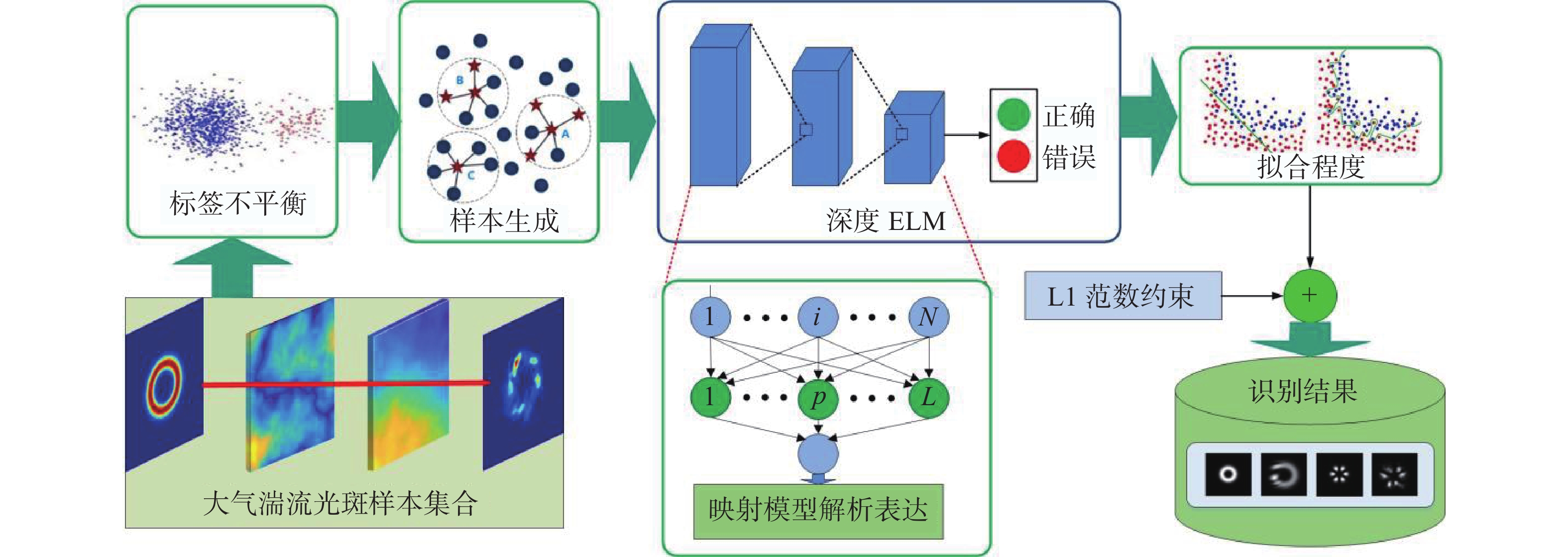
 Abstract
Abstract FullText HTML
FullText HTML PDF 1655KB
PDF 1655KB